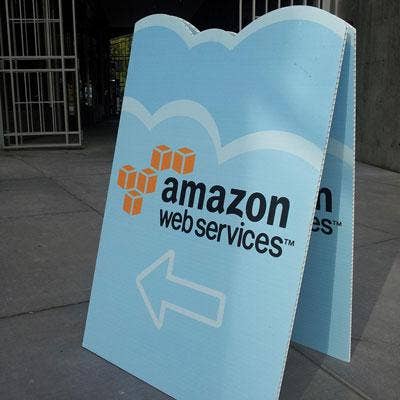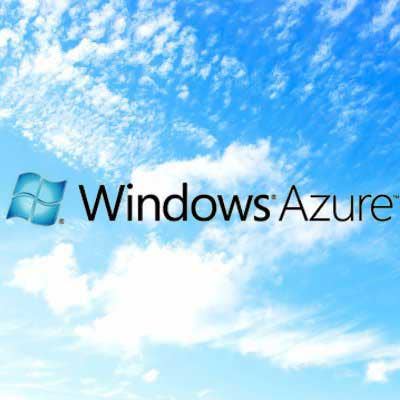Cisco's Earle Talks Winning Vs. Amazon And The Future Of Hybrid Cloud

The Public Vs. Private Battle
Cisco says its OpenStack Private Cloud is winning customers vs. Amazon because of the networking giant's hybrid cloud strategy.
Nick Earle, Cisco's senior vice president Global Cloud and Managed Services sales, said Cisco "completely disagrees" with Amazon's belief in a 100 percent public cloud world. San Jose, Calif.-based Cisco is currently undergoing a major refocus of its Intercloud strategy as well as reorganizing its cloud division.
In an interview with CRN, Earle talked about being less expensive than Amazon, the "extremely fast" adoption rate of its OpenStack Private Cloud and new joint Microsoft architecture, as well as how Cisco is placing its bet on a hybrid cloud world. Following are excerpts of the conversation.

How often do you go head to head with Amazon and win?
Every time that we talk to a customer about our OpenStack Private Cloud, they ask us to compare it to Amazon because they're the 800-pound Gorilla on the public side.
I would say that 50 [percent] to 60 percent of all of our OpenStack Private Cloud wins have been vs. Amazon. The other 40 percent typically tend to be vs. [do-it-yourself] in a VMware type of environment.

How frequently are you coming up against Amazon?
Whenever we talk about cloud, we come up against them all the time. People always ask us.
Amazon is always there, but what we're doing is putting this capability around where you can embrace the best of Amazon without having to go completely to public cloud where you lose all control and you have no control over your data compliance. Where we completely disagree with Amazon is that we do not believe in a world of 100 percent public cloud, we believe in a hybrid.

Where does the public cloud strategy sit in Intercloud?
Our cloud strategy is not to be a public cloud provider; there's several out there that are very good. We're enabling hybrid cloud … hybrid in the sense of multi-architecture hybrid. So the ability to have a single pane of glass to manage your cloud usage across Microsoft Azure stacks, we released Cisco Cloud Architecture with Microsoft. [We also released] VMware stacks with [Cisco Virtualized Multiservice Data Center and] also OpenStack stacks and the ability to do that on-premise and off-premise.

You previously said there are cost advantages in certain scenarios of going with Cisco OpenStack vs. Amazon.
When I say public cloud I mean off-premise public cloud -- AWS, Azure, Google. But if you take a public cloud experience behind the firewall – so what Cisco OpenStack Private Cloud is, is it looks and behaves like AWS but it's behind your firewall and it's remotely managed by Cisco.
When we sell Cisco OpenStack Private Cloud it includes an ROI tool where you plug in your staffing costs, equipment costs, floor space costs, etc. and what we've found is that, over a three-year period, if you are spending less than $30,000 a month on that application if it was running on AWS, it is cheaper to run it on Cisco OpenStack Private Cloud behind the firewall than to run it in AWS. And the reason is because AWS has linear pricing, which means as the application scales you get charged more.

How is the adoption rate for your new architecture with Microsoft Azure?
We've had significant adoption now of the new Microsoft architecture we launched with Microsoft with ACI built in. Now with Intercloud we're putting OpenStack into the service providers.
We're seeing the dominant model being hybrid, which is where applications run on-premise and in the cloud. Applications are becoming cloud-native, not legacy, and they're moving to become hybrid in nature where they run in the cloud and at the same time run at the end user and increasingly in the device. Intercloud Fabric now does the full security to AWS and Azure with the same level of security that you would have as if it was a private cloud.

Why are customers adopting it so quickly?
What Cisco Cloud Architecture does is accelerate the [service provider's] ability to bring new managed services to market quickly because they don't have to do the build, they only have to do the deployment. That's working extremely well.

How about the adoption rate of Cisco OpenStack Private Cloud?
OpenStack Private Cloud is growing extremely fast.
The reason that it's growing fast is because the cloud-native applications -- containers, micro services, DevOps, which just don’t run on traditional architectures like VMware architectures -- they're not based on classic virtualization.
So what we're seeing is this hybrid model of classic apps and cloud-native apps running on-site and in clouds and all being managed through a single portal, a single window, which is essentially what Intercloud is. The ability to manage hybrid applications across, in the future, hundreds of clouds and, as the world of Internet of Things really kicks, in it's beyond public cloud. It's hybrid IT right up to the edge of the network. That's what we're trying to pull off.

How big is OpenStack for Cisco's Intercloud Strategy?
OpenStack is now becoming mainstream due to application availability so everything that we make at Cisco will be available as either a Software-as-a-Service or managed service offering running on OpenStack -- everything we make.
You're going to see a conveyor belt of Cisco applications as we go through the next 12 months now becoming available on our OpenStack platform.